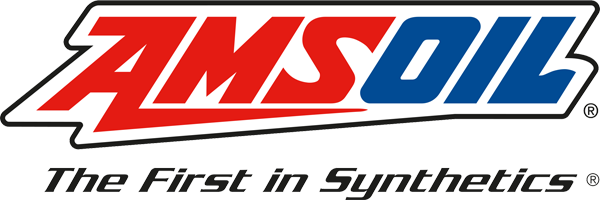Ed Newman
Amsoil Blog
May 05, 2016
Like many of you, I may live in the present, but I do a lot of thinking about the future, especially the future of cars. Recently I’ve been reading quite a bit about Artificial Intelligence, sensors and the continued melding of technology into everyday things. Robin Washington, former editor of the Duluth News Tribune, has also been immersing himself fairly deeply in this topic so I reached out to him after seeing one of his articles on this theme in the Boston Globe. After comparing notes I felt his
insights would be valuable for readers of the AMSOIL Blog.
AMSOIL: Briefly tell us how you became interested in journalism.
Robin Washington: I was always writing — and I was always writing about transportation. My first poem, at age 6, was titled “I Ride the El,” about my first ride around Chicago’s Loop by myself. By then I must have done the trip dozens of times with my family.
I started writing serious poetry as a teen. My high school’s literary magazine advisor suggested I write prose as well, and someone later suggested newspaper articles. I did, not knowing there was any difference between the writing forms.
I was also influenced by my family’s activism in the Civil Rights Movement and quickly learned the power of journalism to address social wrongs, including in transportation. One of my biggest thrills was riding the T in Boston and seeing people reacting my column. You won’t get the rest of “I Ride the El” out of me, though.
AMSOIL: One of your current interests is transportation. How did this come about?
RW: I think the above answers some of that. The rest of that story is, we lived directly across the street from the El, which my mother, an artist, painted every year. (https://www.facebook.com/jeanbirkensteinwashington
(https://www.facebook.com/jeanbirkensteinwashington)) My brother and I would lead neighborhood kids attempting to ride every line in a single evening on Fridays after school, and we figured out how to get to distant destinations (such as the Indiana border) on the Chicago Transit Authority. For 12 cents.
AMSOIL: You’ve written about a future of driverless cars in theBoston Globe. What is your
current vision for the future of the automobile?
RW: It’s changing since we first discussed this just a few weeks ago! Then, I thought
because of the constantly-in-motion/never-need-to-park attribute, that Uber or Google would
own the cars. They’d pick you up, take you wherever, then go get someone else, all day.
Uber CEO Travis Kalanick has called it “Uber without the dude.”
At the New York International Auto Show, however, I learned the automakers, who are
fiercely competing to develop fully autonomous technology, are also re-looking at ownership
models (Ford is testing a shared lease split among 3 to 6 people) as well as other ridesharing
arrangements. Not the least of this is General Motors’ recent $500 million investment
in Uber rival Lyft.
The bottom line is the carmakers aren’t about to let Uber eat their lunch, and if they can figure out a way to get rid of a middle man who’s only purpose is figuring out who rides in the car when, they will.
That’s the ownership piece, which I now predict may be largely retained by the manufacturers, reselling the product multiple times as some form of shared leases. With that comes all the other ramifications I previously held under the Uber model: No auto insurance, no license fees or speeding tickets, greatly affecting municipal revenue; fewer gas stations needed for fleet vehicles, auto repair, etc.
AMSOIL: What are some things happening now that people may be unaware of?
RW: Almost every manufacturer exhibiting at the New York show was displaying a car that had adaptive cruise control, lane assist, automatic braking and self-parking. These are available in the $20,000 2016 Honda Civic. The features are touted all over the commercials, but I don’t think the public is hearing them. Only one general public attendee I interviewed at the Twin Cities Auto Show owned a car that had them and had comments on how well it performed. Granted, this is a sampling of car enthusiasts who like to drive. But for most, the features did not seem to be top of mind until I pointed them out.
The same is true with “connectivity,” the automakers initiatives on all the gadgetry connecting your car to your phone, computer, your friend’s phone, etc. As with trying to figure out how to program a VCR (a technology that died before most people could master it), connectivity is impressive but leaves a lot of consumers baffled.
AMSOIL: Will this be something global some day or only in places like Europe, North America and India/China?
RW: It clearly will take over the West before the developing world, but actually will start in Singapore or somewhere similar. The first attribute needed is a government willing to revamp all the motor vehicle laws, as well as retrofit roadways for driverless vehicles to better see markings, signage, etc.
The second is a climate suited for driverless cars, which for now means no snow or fog. Areas that do have those weather conditions will have to close off roadways to experiment on. Most of the US is way behind on all of the above, and only a handful of states have begun to look at rewriting motor vehicle laws.
AMSOIL: You’re developing a program for public radio? What will that be about?
RW: The working title for the hour-long special, consisting of about six segments on the above, is “Who’s Gonna Drive You Home – Tomorrow?” We’re developing it for national distribution with support from Wisconsin Public Radio. The show will run in its entirety as a podcast, though some stations may feature the whole hour uninterrupted. For others, the six segments will be packaged as stand-alone features to run on individual public radio stations during “Morning Edition” or other shows.
There is strong interest in the project, including in major markets, which I’ll be able to report on in a couple of weeks.


 WordPress
WordPress